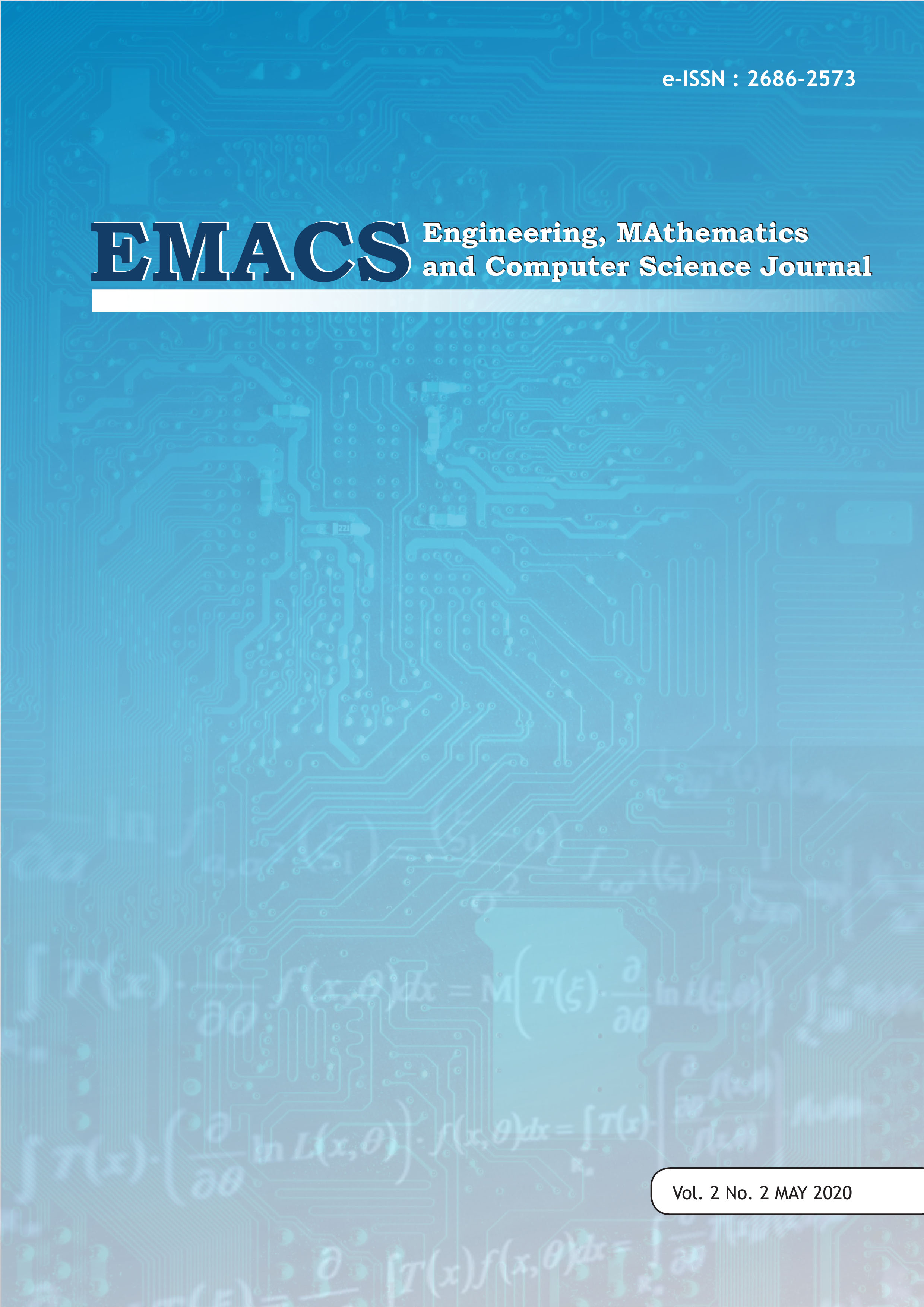Pengembangan Sistem Kendali Robot Humanoid untuk Edukasi berdasarkan Robosapien dan Raspberry Pi Zero
DOI:
https://doi.org/10.21512/emacsjournal.v2i2.6473Keywords:
Learning media, humanoid robot, Robosapien, Raspberry Pi Zero W, Python.Abstract
In order to help students be more interested in learning about programming both at school and at home, we have designed educational toys in the form of humanoid robot. In this paper, intelligent robot movement control systems are developed, thus the students can interact directly and learn programming on human robots. For building a low-cost humanoid robot, we modified low-cost robot toy, that is Robosapien from Wowwee by embbeding a control system. The control system is developed based on Raspberry Pi Zero W, which enables us to control Robosapien's movements wirelessly. This learning media is expected to enhance the student’s spirit of learning, especially in the field of robotics and programming. The main contribution of the research is the description and analysis of various design decisions during the development of this humanoid robot. In addition, it provides information about the main components for development and example for interacting with robots as learning media.References
Budiharto, W., Kanigoro, B., & Noviantri, V. (2014). Ball Distance Estimation and Tracking System of Humanoid Soccer Robot, 170–178.
Budiharto, W., Gunawan, A. A., Sari, A. C., & Ngarianto, H. (2015). Designing of Humanoid Robot with Voice Recognition Capability. In Proceedings of the 3rd IIAE International Conference on Intelligent Systems and Image Processing (pp. 202-205).
Cicolani, J. (2018). Raspberry Pi GPIO. In Beginning Robotics with Raspberry Pi and Arduino (pp. 103-128). Apress, Berkeley, CA.
Gunawan, A. A., Stevelino, A., Ngarianto, H., Budiharto, W., & Wongso, R. (2017). Implementation of Blind Speech Separation for Intelligent Humanoid Robot using DUET Method. Procedia computer science, 116, 87-98.
Gunawan, A. A., Mulyono, P. R., & Budiharto, W. (2018). Indonesian Question Answering System for Solving Arithmetic Word Problems on Intelligent Humanoid Robot. Procedia Computer Science, 135, 719-726.
Ha, I., Tamura, Y., Asama, H., Han, J., & Hong, D. W. (2011). Development of Open Humanoid Platform DARwIn-OP, 2178–2181.
Jalil, A. (2016). Rancang Bangun Robot Humanoid. Proceeding, Konferensi Nasional Ilmu Komputer (KONIK APTIKOM), ISSN, 2338-2899.
Kurebayashi, S., Kamada, T., & Kanemune, S. (2006, November). Learning computer programming with autonomous robots. International Conference on Informatics in Secondary Schools-Evolution and Perspectives (pp. 138-149). Springer, Berlin, Heidelberg.
Major, L., Kyriacou, T., & Brereton, O. P. (2012). Systematic literature review: teaching novices programming using robots. IET software, 6(6), 502-513.
Miller, D. P., & Nourbakhsh, I. (2016). Robotics for education. In Springer handbook of robotics (pp. 2115-2134). Springer, Cham.
Ngarianto, H., Gunawan, A. A., & Budiharto, W. (2018). Separating Multi Speeches in Intelligent Humanoid Robot using FastICA. IPTEK The Journal for Technology and Science, 29(1), 1-4.
OspennikovaÉš, E., Ershovb, M., & Iljin, I. (2015). Educational robotics as an inovative educational technology. Procedia-Social and Behavioral Sciences, 214, 18-26.
Pandey, A. K., & Gelin, R. (2017). Humanoid robots in education: a short review. Humanoid robotics: a reference, 1-16.
Samans, J. (2007). The Robosapien Companion: Tips, Tricks, and Hacks. Apress.
Tarunajaya, C., Oey, K. W., Kuwandy, R. L., Ngarianto, H., Gunawan, A. A., & Budiharto, W. (2016). Designing of Medium-Size Humanoid Robot with Face Recognition Features. IPTEK The Journal for Technology and Science, 26(2).
Downloads
Published
How to Cite
Issue
Section
License
Authors who publish with this journal agree to the following terms:
- Authors retain copyright and grant the journal right of first publication with the work simultaneously licensed under a Creative Commons Attribution License - Share Alike that allows others to share the work with an acknowledgment of the work's authorship and initial publication in this journal.
- Authors are able to enter into separate, additional contractual arrangements for the non-exclusive distribution of the journal's published version of the work (e.g., post it to an institutional repository or publish it in a book), with an acknowledgment of its initial publication in this journal.
- Authors are permitted and encouraged to post their work online (e.g., in institutional repositories or on their website) prior to and during the submission process, as it can lead to productive exchanges, as well as earlier and greater citation of published work.
USER RIGHTS
All articles published Open Access will be immediately and permanently free for everyone to read and download. We are continuously working with our author communities to select the best choice of license options, currently being defined for this journal as follows: Creative Commons Attribution-Share Alike (CC BY-SA)





